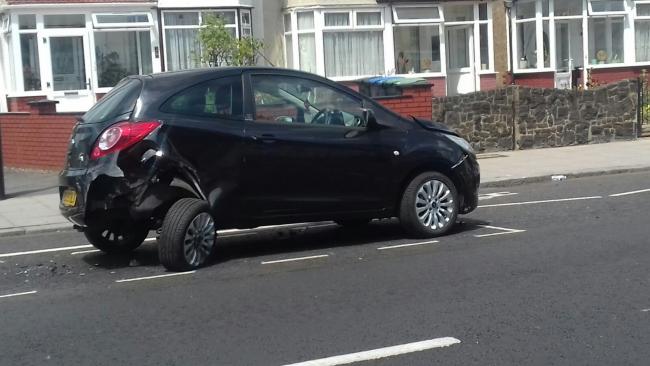
A council official was grilled on accident figures by members of the public who expressed ongoing safety fears over the Cycle Enfield scheme.
Richard Eason, the council’s programme director for Cycle Enfield, sought to reassure members of the public who claimed ‘floating’ parking bays and cycle lane dividers – dubbed ‘orcas’ – had been causing accidents.
At a meeting of Haselbury ward forum yesterday (Wednesday, September 19), Mr Eason was keen to stress that Cycle Enfield is a long-term project that will gradually change people’s cycling and driving habits.
Local man John Stanford, who said he was a cyclist for 40 years, described the floating parking bays – set out into the road to accommodate the cycle lanes – as “absolutely deadly”
He said: “Where do you get your figures from concerning accidents? I have been talking to people at Bush Hill Park and locally – and on your site, you don’t seem to be having accidents.
“I have seen three accidents concerning floating car parks – and they have all been people undertaking, thinking it’s a queue of traffic or whatever, and they have hit the car right up the back side and smashed it.
“I have seen it once in Green Lanes, once in Hertford Road.
“When you ring up the council, they say ‘oh no, it seems to be working quite nicely’.”
Mr Eason said: “We get the figures from the police. The police report to us those accidents they consider serious or where somebody has been injured.
“Over time, we will be able to monitor that data and compare before and afterwards – but we have to take a medium-term view on that.”
The issue of floating parking bays has been raised before, with people living near the A1010 Hertford Road claiming they had led to a spate of smashes between Tramway Avenue and Causeyware Road.
The council later published data showing there had been five minor accidents along that stretch of the A1010 since the implementation of the Cycle Enfield scheme.
An independent review blamed bad driving for the accidents – despite conceding that the bays would likely lead to more “glancing blows” from passing traffic.
 Damage to a car near Tramway Avenue
Damage to a car near Tramway Avenue
Mr Eason said: “Floating bays are a new innovation. That is something we will continue to review.
“We are narrowing the carriageways, and we know from other schemes elsewhere that will slow the speed of the traffic.”
He claimed some of the problems could be due to drivers coming from a section of road with no cycle lanes to an area with a new layout.
Once the whole scheme was finished, this could cease to be a problem, he said.
Mr Eason added that the council had removed orcas – which some pedestrians have been tripping over – from certain areas and avoided installing them in places of high footfall.
Other members of the public raised questions about the schemes effectiveness in cutting pollution, claiming it increased congestion as narrower carriageways led to cars waiting behind buses.
Mr Eason said the Cycle Enfield scheme was needed to cut congestion on London’s roads as the city’s population continued to grow.
He stressed that the project was aimed at creating a safe environment that will encourage people to cycle more often – leading to better public health and less strain on the health service.
Mr Eason admitted change would not come overnight but encouraged people to look to the long-term benefits for their children and grandchildren.



Comments: Our rules
We want our comments to be a lively and valuable part of our community - a place where readers can debate and engage with the most important local issues. The ability to comment on our stories is a privilege, not a right, however, and that privilege may be withdrawn if it is abused or misused.
Please report any comments that break our rules.
Read the rules here